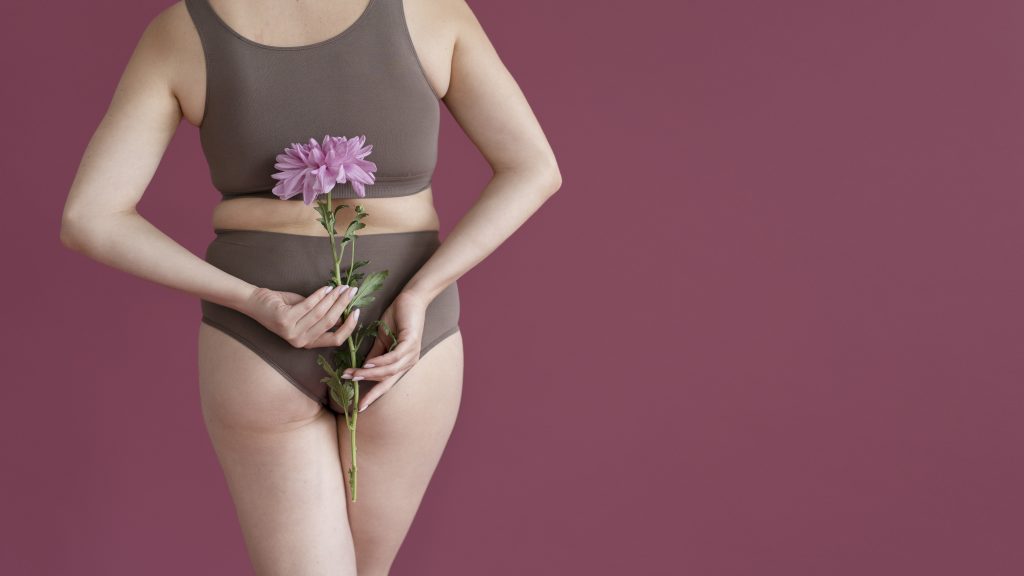Best Effective Weight Loss After Uterine Polyp Removal

Discover effective strategies for weight loss after uterine polyp removal. Learn how to achieve your health goals with expert tips and personalized guidance. Start your journey to a healthier you today.The journey to weight loss can often be a challenging and elusive path for many individuals, but what if there was a unique connection between shedding those stubborn pounds and undergoing a medical procedure like uterine polyp removal? Imagine experiencing relief from the symptoms associated with these growths and witnessing a surprising transformation in your body’s weight.
The link between weight loss and uterine polyps removal may seem unexpected. Yet, emerging research suggests that this correlation could hold the key to unlocking new insights into managing both health issues simultaneously. Join us as we delve into the intriguing realm of post-uterine polyp removal weight loss, exploring the potential impact on one’s physical well-being beyond traditional expectations.
Introduction: Weight Loss After Uterine Polyp Removal
Imagine a journey towards better health and newfound confidence sparked by an unexpected twist in women’s wellness. The weight loss experience after uterine polyp removal is a lesser-known yet significant aspect that deserves attention. Beyond the relief from physical discomfort, this process often heralds a transformative chapter in one’s life, where shedding the burden of polyps and excess weight becomes a reality. As we delve into this intricate relationship between gynaecological procedures and weight management, it becomes evident that there is much to explore and understand about the body’s response post-removal. Join us as we navigate through personal anecdotes, expert insights, and scientific revelations on the intriguing topic of weight loss after uterine polyp removal.
Can a uterine polyp cause weight gain?
It may come as a surprise to some, but a uterine polyp can indeed cause weight gain in some women. These noncancerous growths in the uterus can lead to hormonal imbalances, such as increased estrogen levels, which are known to contribute to weight gain. Additionally, the presence of uterine polyps can cause irregular menstrual cycles or heavy bleeding, resulting in fatigue and decreased physical activity that may also contribute to weight gain.
However, it’s essential to note that weight gain due to uterine polyps is not universal and may vary from person to person. Many women report experiencing weight loss after undergoing treatment for uterine polyps, such as removal through hysteroscopy or medication. Addressing the underlying issue of uterine polyps can often lead to improved hormonal balance and overall health, potentially resulting in weight loss as the body returns to its natural equilibrium.
In conclusion, while a uterine polyp can contribute to weight gain for some individuals, it is not always the sole reason behind fluctuations on the scale. Seeking medical advice and proper treatment for uterine polyps is crucial for reducing potential weight-related side effects and overall health and well-being. Weight loss after uterine polyp removal is common and highlights the importance of addressing underlying health issues that may be impacting one’s weight.
It is essential to consult with a healthcare provider if you suspect you have uterine polyps or are experiencing unexplained weight gain. Treatment options may include medications, minimally invasive procedures, or surgery to remove the polyps. Addressing and treating the underlying cause can improve your overall health and achieve weight loss with proper diet and exercise. Remember that each individual’s experience with uterine polyps and weight fluctuations may vary, so seeking personalized medical advice for an accurate diagnosis and treatment plan tailored to your specific needs is essential.
What are the side effects of endometrial polyp removal?
After undergoing a procedure to remove endometrial polyps, many women may experience unexpected side effects, with weight loss being one notable outcome for some individuals. The hormonal shifts after removing these growths can impact metabolism and appetite, leading to unintentional shedding of pounds in some instances. While weight loss can be a positive change for some women, monitoring this closely and ensuring it does not lead to any nutritional deficiencies or other health concerns is essential.
In addition to potential weight loss, women undergoing endometrial polyp removal may also experience changes in their menstrual cycle. The disruption caused by the procedure and subsequent healing process can sometimes lead to irregular periods or alterations in flow consistency. This variation is temporary and should resolve as the body fully recovers from removing the polyps. However, if these changes persist or become concerning, individuals must consult their healthcare provider for further guidance and support.
Understanding uterine polyps
Uterine polyps, often benign growths found in the lining of the uterus, can cause a range of symptoms, such as irregular bleeding and pelvic pain. While these polyps are typically non-cancerous, they can still impact a woman’s quality of life and fertility. One intriguing aspect that has been gaining attention is the potential link between uterine polyps and weight gain. Studies have shown that some women experience weight loss after undergoing the removal of uterine polyps, suggesting a possible connection that warrants further exploration.
The exact mechanisms behind this phenomenon are still not fully understood, but it is believed that uterine polyps may disrupt hormonal balance and metabolic processes in the body. Removing these growths could restore normal functioning, improving overall health and weight management. This novel insight highlights the complex interplay between reproductive health and metabolic factors, underscoring the importance of addressing underlying gynaecological issues for holistic well-being. Further research in this area could provide valuable insights into personalized treatment approaches for women with uterine polyps seeking optimal health outcomes.
In conclusion, understanding uterine polyps goes beyond physical manifestations to encompass broader implications for women’s health and wellness. The potential correlation between weight loss and uterine polyp removal sheds light on new avenues for research and patient care strategies. By recognizing the multifaceted nature of these growths and their impacts on the body, healthcare providers can offer more comprehensive support to individuals dealing with this common gynaecological condition. Emphasizing individualized approaches tailored to each woman’s unique needs will be vital in optimizing treatment outcomes post-polyp removal, including potential benefits for weight management and overall metabolic health.
Impact on weight and metabolism
Weight loss after uterine polyp removal can be a common concern for many individuals. Understanding the impact on weight and metabolism post-surgery is crucial for managing expectations and promoting overall well-being.
It’s important to note that weight loss after uterine polyp removal may vary from person to person. Factors such as individual metabolism, lifestyle changes, dietary habits, and exercise routines can all play a role in determining the outcome.
By focusing on maintaining a healthy lifestyle, including a balanced diet and regular physical activity, individuals can support their metabolism and potentially aid in weight management post-uterine polyp removal. To ensure a safe and effective recovery process, consulting with healthcare professionals for personalized guidance and support is also recommended.

Dietary changes for weight management
Regarding weight management after uterine polyp removal, dietary changes are crucial in supporting your health and wellness goals. By strategically adjusting your diet, you can effectively manage your weight and promote overall well-being post-surgery.
Focusing on nutrient-dense foods that support a healthy metabolism and aid in weight loss is essential. Incorporating plenty of fruits, vegetables, lean proteins, whole grains, and healthy fats into your diet can help you achieve and maintain a healthy weight.
Additionally, staying hydrated, monitoring portion sizes, and being mindful of emotional eating patterns can further support your weight management journey after uterine polyp removal. Adopting a balanced and nutritious diet tailored to your needs can optimize your recovery process while working towards achieving your desired weight loss goals.
Dietary changes for weight management
Regarding weight loss after uterine polyp removal, dietary changes are crucial in supporting the body’s healing process and promoting overall well-being. By making mindful food choices and incorporating nutrient-dense foods into your diet, you can effectively manage your weight while aiding in recovery post-surgery.
Focusing on a balanced diet with plenty of fruits, vegetables, whole grains, lean proteins, and healthy fats is essential. Incorporating foods rich in vitamins, minerals, and antioxidants can help boost your immune system and support optimal healing.
Additionally, staying hydrated by drinking plenty of water throughout the day is essential for maintaining good health and managing weight. Avoiding processed foods high in sugar and unhealthy fats can also contribute to achieving weight loss after uterine polyp removal.
By making sustainable dietary changes tailored to your needs, you can support your body’s recovery process while effectively managing your weight post-surgery.
Exercise recommendations post-surgery
After undergoing uterine polyp removal surgery, it is crucial to approach exercise recommendations with care and consideration. While weight loss may be a goal for some individuals post-surgery, it is essential to prioritize safe and effective exercise routines that support recovery and overall well-being.
It is recommended to consult with your healthcare provider or a qualified professional before starting any exercise regimen post-surgery. They can provide personalized guidance based on your health status and surgical outcomes.
Focus on low-impact exercises such as walking, gentle yoga, or swimming to build strength and stamina gradually. These activities can aid in weight management while promoting healing and reducing the risk of complications.
Patience and consistency are key when incorporating exercise into your post-surgery routine. Listen to your body, respect its limitations, and gradually progress towards your fitness goals safely and sustainably.
Monitoring progress and setting goals
Monitoring progress and setting achievable goals are crucial aspects of the weight loss journey post uterine polyp removal. By tracking your progress regularly, you can stay motivated and adjust as needed to reach your desired weight loss goals.
Setting realistic and measurable goals is critical to success. Whether aiming for a certain number on the scale or focusing on healthy habits like regular exercise and balanced nutrition, having clear objectives can help you stay on track post-uterine polyp removal.
Remember, every individual’s weight loss journey is unique, so it’s essential to consult with your healthcare provider to develop a personalized plan that suits your specific needs and health considerations. Tracking progress and setting achievable goals can empower you to take charge of your health and well-being after uterine polyp removal.

Support systems and resources available
Losing weight after uterine polyp removal can be a challenging journey, but with suitable support systems and resources, it can be more manageable and successful. Various tools and resources are available to help individuals in this process, including personalized diet plans, exercise routines tailored to post-surgery needs, online support groups for motivation and guidance, and professional medical advice from healthcare providers specializing in post-operative care.
By utilizing these support systems and resources effectively, individuals can navigate their weight loss journey with confidence and achieve their health goals following uterine polyp removal. Remember that each person’s experience is unique, so it’s essential to find the right combination of support that works best for you.
Regarding weight loss after uterine polyp removal, having proper support systems and resources in place can make a significant difference in achieving your health goals. Support systems may include healthcare professionals such as doctors, nutritionists, or therapists who can provide guidance tailored to your needs.
Resources like online forums, support groups, or mobile apps can offer valuable information, motivation, and encouragement during your weight loss journey post-uterine polyp removal. These platforms can help you connect with others who have gone through similar experiences and share insights on effective strategies for managing weight after the procedure.
Utilizing these support systems and resources effectively can enhance your overall well-being and increase the likelihood of successful weight loss following uterine polyp removal.
Conclusion: Importance of holistic approach to recovery
In conclusion, adopting a holistic approach to recovery is essential for addressing all aspects of an individual’s well-being. Individuals can achieve long-lasting and sustainable recovery outcomes by considering physical, emotional, mental, and spiritual needs simultaneously. This approach recognizes the interconnectedness of various facets of health and emphasizes the importance of personalized care. Holistic recovery fosters a sense of empowerment and self-awareness, enabling individuals to make positive lifestyle choices that support their overall well-being. As we prioritize holistic approaches in recovery programs, we pave the way for more effective and comprehensive healing experiences for individuals seeking to overcome challenges. Embracing this approach benefits individuals on their recovery journey and promotes a culture of wellness and support within our communities.
FAQs
- Can uterine polyp removal affect my ability to lose weight?
Yes, uterine polyp removal may positively impact weight loss as it can alleviate symptoms that may have hindered your ability to exercise or maintain a healthy diet. - How soon after uterine polyp removal can I start focusing on weight loss?
It is essential to consult with your doctor, but in general, you can typically begin focusing on weight loss once you have fully recovered from the procedure. - Will weight loss after uterine polyp removal improve my overall health?
Weight loss can have numerous health benefits, including reducing the risk of certain diseases and improving overall well-being. - Are there any dietary recommendations for weight loss after uterine polyp removal?
A balanced diet of fruits, vegetables, lean proteins, and whole grains is generally recommended for weight loss and overall health. - Can exercise help with weight loss after uterine polyp removal?
Regular physical activity is essential for weight loss and improves mood, energy levels, and overall fitness. - Will hormone changes post-uterine polyp removal affect my ability to lose weight?
Hormonal changes following uterine polyp removal may impact weight loss efforts, but with proper diet and exercise, it is still achievable. - What are some common challenges people face when losing weight post-uterine polyp removal?
Challenges may include hormonal fluctuations, emotional eating, and physical limitations during recovery. - Is it safe to take weight-loss supplements after uterine polyp removal?
It’s best to consult with your healthcare provider before taking any supplements to ensure they are safe and appropriate for your post-procedure.




